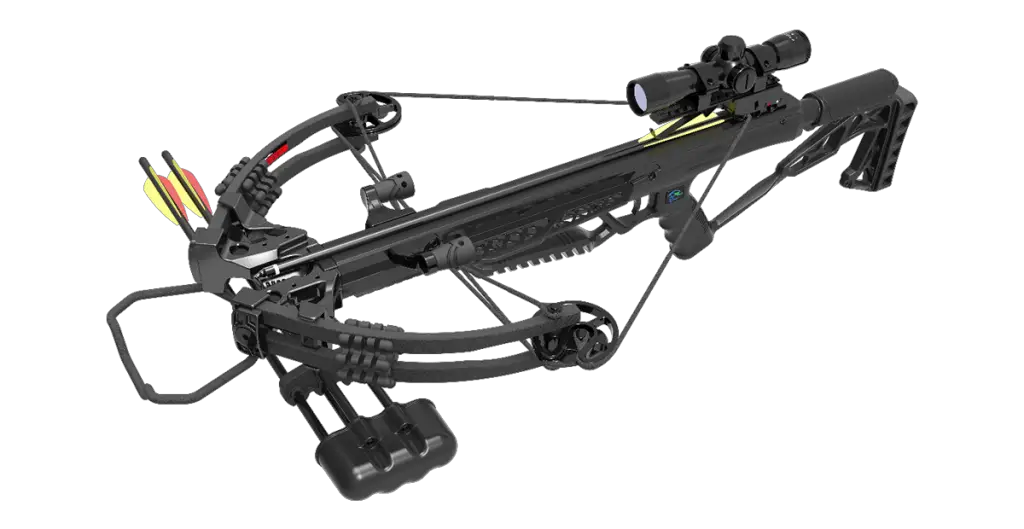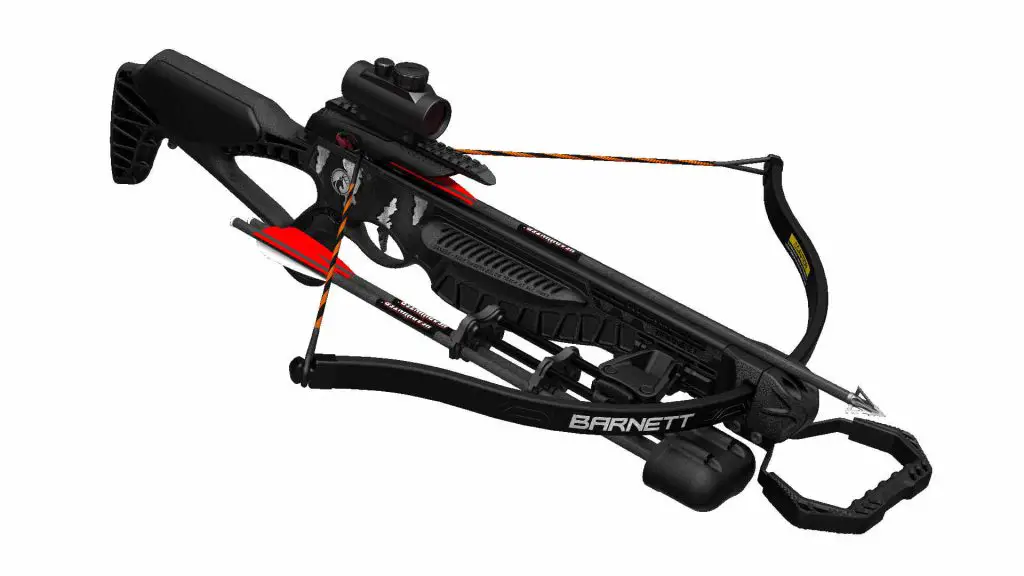As an avid archer and crossbow enthusiast, I am often asked to explain the differences between recurve and compound crossbows. Both have their strengths and weaknesses, and there is no definitive “better” option. It comes down to your specific needs and preferences as an archer. In this comprehensive guide, I will compare all aspects of these two popular types of crossbows to help you determine which is best for you.
Power and Speed
The most noticeable difference between recurve and compound crossbows becomes apparent as soon as you shoot them.
- Compound crossbows generate significantly higher velocity and kinetic energy due to their pulley systems and stiffer limbs. This allows them to hit harder and flatter over long ranges. Their power comes from stored mechanical energy versus reliance on the limbs’ draw weight.
- Recurve crossbows rely solely on draw weight and limb design for power. While they do not match the sheer speed and power of compounds, modern recurves are still capable of hunting weapons with sufficient kinetic energy to take the game cleanly. Their simpler design makes recurves somewhat smoother and quieter to shoot as well.
Here is a comparison of typical speeds and kinetic energy:
| Metric | Recurve | Compound |
|---|---|---|
| Speed | 200-350 FPS | 300-425+ FPS |
| Kinetic Energy | 75-125 FP KE | 100-150+ FP KE |
As you can see, compounds produce more power and speed due to their mechanical advantage. For hunters wanting the highest possible energy for large game or long shots, a compound is the best choice.
Recurve crossbows

Accuracy
Beyond power, accuracy is most important for hunting and target shooting purposes. High precision gives you better chances of clean kills and higher scores.
- Accuracy is highly dependent on the archer for both recurve and compound crossbows. An experienced shooter who practices regularly should be capable of 1-2 inch groups at 50 yards with either type of crossbow.
- Compounds can be slightly more forgiving for novice archers thanks to the let-off effect, allowing for minor form errors without ruining the shot. They also tend to have shorter power strokes which makes them more maneuverable and less tiring to handle for off-hand and awkward shooting positions.
- Recurve crossbows require strong and consistent form to shoot accurately due to holding full draw weight through the entire power stroke. Any flaws are instantly exaggerated. This makes them less suitable for beginning archers but encourages the development of sound technique.
Overall for hunting and target purposes, both crossbow types are capable of excellent accuracy. Pay attention to your skill level and shooting needs when deciding. A compound may serve a beginner better initially thanks to increased forgiveability.
Compound crossbows

Hunting Applications
When it comes to hunting usage, both recurve and compound crossbows are suitable options. However, there are some key differences to factor in based on your local regulations and type of game pursued.
Compound Pros:
- Higher kinetic energy for large game like deer, elk, etc
- Flatter trajectories allow longer effective shots
- Built-in let off aids off-hand positional shooting
Recurve Pros:
- Adequate for medium game like deer at moderate ranges
- Smoother and quieter shooting for stealth
- Shorter and lighter for maneuverability in blinds/stands
Make sure to check your state’s regulations. Some have minimum draw weights for hunting with crossbows, which may rule out lighter draw recurves. Compounds typically meet most minimum requirements.
Also consider the game you intend to pursue and your typical shot distances. Compounds have clear advantages for large game that may require longer range shots. But recurves are still potent and effective weapons in the right situations.
Noise Levels
An often overlooked comparison point between recurves and compounds is the noise signature they generate during shooting. For hunters and target shooters not wanting to disturb others nearby or alert game, this is an important factor.
- Compound crossbows tend to be louder due to the mechanical nature of their cam systems and stiff limbs snapping into place. Even with string dampeners installed, they produce a noticeable crack on firing.
- Recurve crossbows are generally quieter thanks to their simple, smoother shooting dynamics. Without cams and extreme limb vibrations, noise is limited primarily to the string snapping forward and arrow flight noise.
If sound levels are important for your needs, test potential crossbow models in person yourself to get a firsthand feel. Sound output can vary based on quality and components used. But in general, recurves produce less obvious noise signatures, giving them stealth advantages for hunting applications.
Recurve crossbows

Cost and Value Comparison
With any purchase, cost invariably plays a role in decision making. Crossbow prices span an extremely wide range from under $100 to several thousand dollars. In general though:
- Basic to mid-range recurve crossbows tend to be cheaper due to their simpler designs and components. It is easy to find functional, beginner friendly options under $300. High end target recurves with premium features still cost upwards of $1,000+.
- Compound crossbow prices start higher and increase rapidly. Entry models often start around $400+ and hunting specific compounds easily cost $1,500 or more. Top tier competition compounds can top $2,500+ easily.
For shooters on tight budgets, $300 can purchase a quality recurve capable of solid accuracy and performance. An equivalent compound at the same price point will typically be an obvious compromise in quality and features. The mechanical complexity and advanced materials in compound crossbows drives prices higher across the range.
However, the superior power and tech available in premium compound crossbows still makes them tempting, even with the greater costs. Consider your budget constraints as well as needs and uses when deciding which direction to take. Compounds give you more power for the money, whereas recurves stretch your budget further for equivalent or slightly lower specs. Either can be accurate and reliable in competent hands though.
Shooting Experience
By now the technical differences between recurve and compound crossbows are clear. But there are also more subtle shooting experience elements that you cannot judge from numbers alone.
As a traditional archer at heart, here is my take on how each feels to shoot:
Recurve
- Satisfying snap and string vibration on release
- Smooth, simple shooting with no mechanical variables
- Holds draw weight constantly through stroke
- Encourages solid fundamental form
- Gives me a primal, traditional shooting experience
Compound
- Exciting speed and power on each shot
- The let-off effect eases holding at full draw
- More adjustability in draw weights/power stroke via cams
- Cocking aids allow easier spanning for strength-limited archers
While the compound produces superior speed and energy, I find the recurve provides a truer, more rewarding shooting experience closer to vertical bows. It encourages better fundamentals and feels smooth while still delivering adequate power.
But for archers focused purely on extreme ballistics and specs, the mechanical edge of modern compounds is compelling. Test models of each yourself to determine your subjective experience.
Ease of Use
A final comparison point to discuss is everyday use factors. Aspects like cocking effort, carrying weight, adjustment needs, and accessories impact how easily you can shoot either crossbow regularly.
- Compounds often include cocking aids to alleviate their extremely high draw weights. Without a built-in crank system or separate rope cocker they would be almost impossible to span manually. This allows higher power outputs without exceeding human limitations.
- Recurve crossbows feature simpler, lower draw weights that most adults can span manually without assistance. While still strenuous, proper form and technique allows you to cock them reliably shot after shot. This saves weight by avoiding external cocking devices.
- Sound dampeners are mandatory for compounds. Without them, the noise is excessive. Recurves can benefit from string silencers as well but produce less inherent vibration and noise.
- Compounds offer greater customization and adjustments via their advanced cam systems. You can tweak draw length, let off percentages, and power stroke to match your preferences and shooting style. Recurves are a static configuration in comparison.
Ease of use is largely subjective and dependent on your strengths and needs. However, the basic, manual nature of recurves gives them an advantage for simplicity and reliability. Compounds ultimately require more accessories and components that could fail over time. It comes down to mechanical complexity vs raw simplicity.
Final Recommendation
After comparing all aspects thoroughly of recurve and compound crossbows, a definitive “better” option does not exist. The best crossbow depends entirely on your specific needs and preferences as an archer. Here is a quick summary:
Reasons to choose a compound crossbow:
- Maximum power and speed for hunting or target shooting
- Added forgiveability for novice shooters
- Increased adjustability to fine-tune performance
- Built-in cocking aids make spinning easier
- Generally compatible with crossbow scopes and accessories
Reasons to choose a recurve crossbow:
- Smoother, quieter shooting
- Encourages development of sound shooting form
- Simple, reliable operation
- Lightweight and maneuverable for hunting
- Very affordable entry-level options
- Legal for primitive weapon seasons in some areas
For me, the recurve wins out due to its elegant simplicity and classic shooting dynamics. The primitive challenge of a simple prod and string appeals to my traditional archery instincts. But make no mistake – modern compounds represent the pinnacle of extreme performance and innovation. Their speed and kinetic energy outputs are unprecedented.
Carefully weigh your intended uses, requirements, preferences, and budget when deciding. If ultimate power is the priority, choose a cutting-edge compound crossbow built for blistering speed and knockdown energy. For a budget-friendly option focused on fundamentals and hunting versatility, the recurve fills that role admirably.
No matter which design you select, understand the strengths and limitations fully so you choose the best match for your needs. Both platforms are amazingly capable. Invest time practicing to master whichever crossbow you pick. Consistent skill development will always provide more returns than relying on specs and technology alone.

